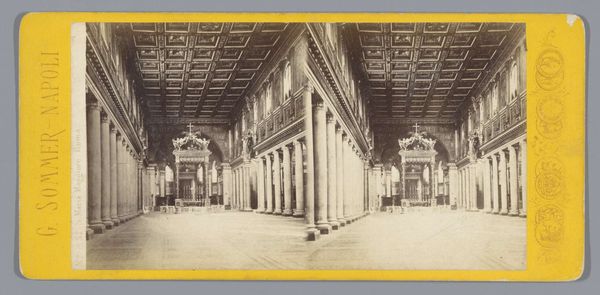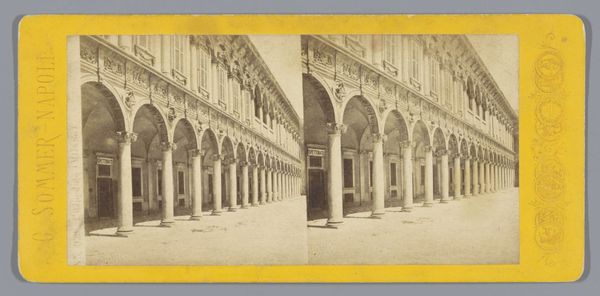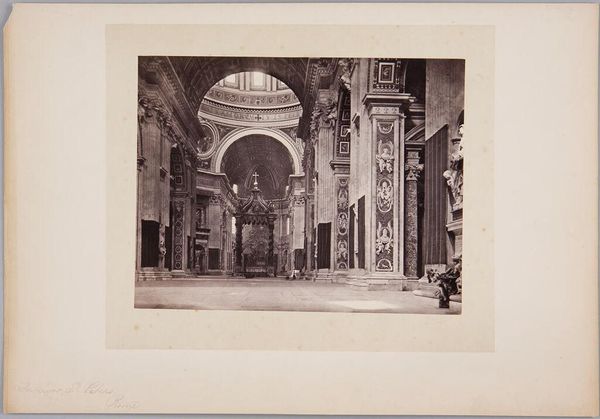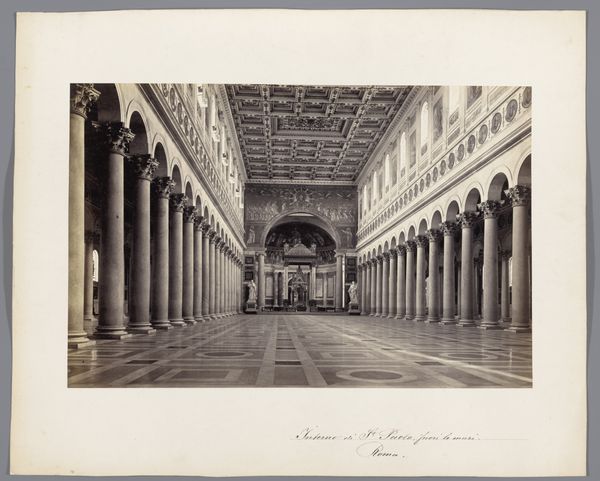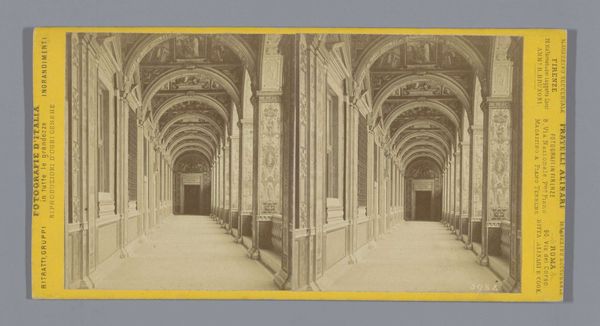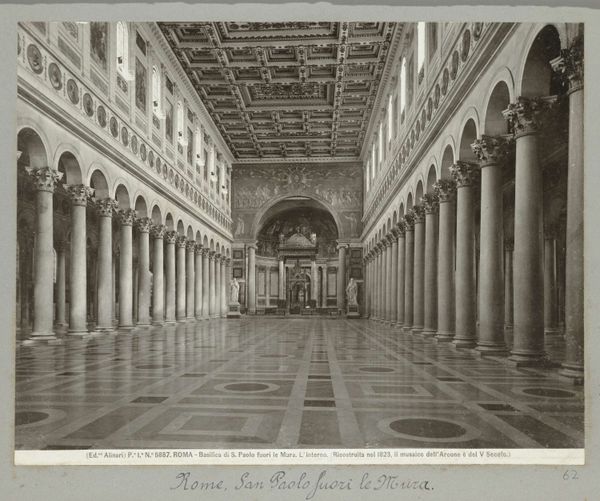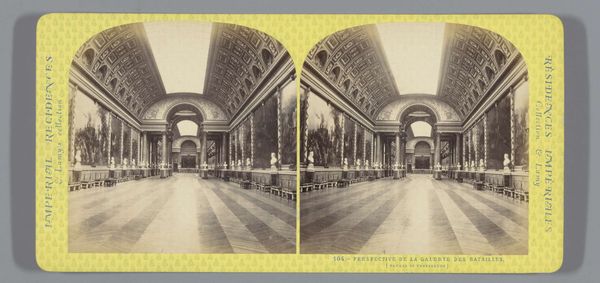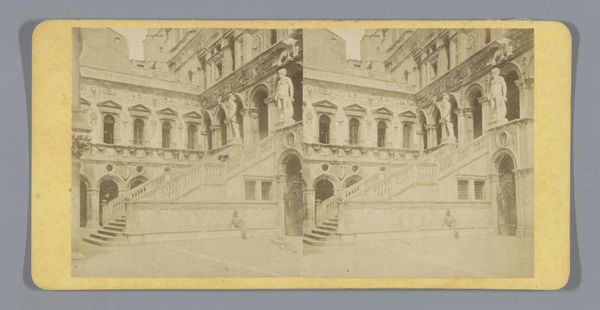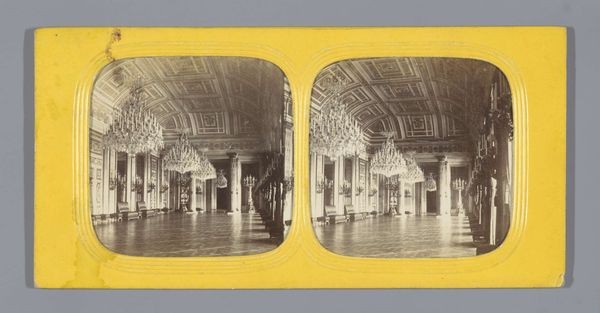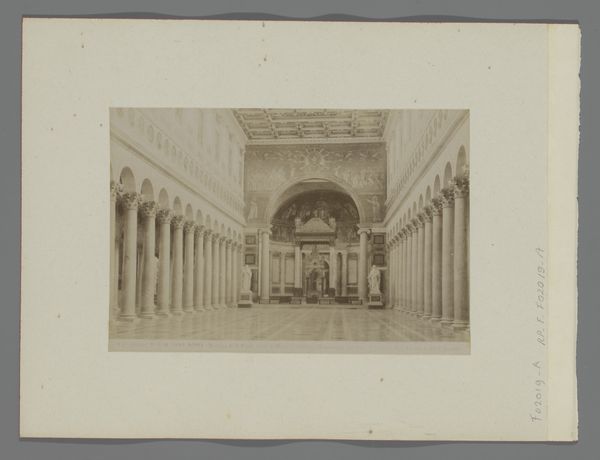
print, photography, gelatin-silver-print, architecture
# print
#
greek-and-roman-art
#
photography
#
gelatin-silver-print
#
cityscape
#
architecture
#
realism
Dimensions: height 83 mm, width 177 mm
Copyright: Rijks Museum: Open Domain
Curator: Welcome. Before us, we have a gelatin-silver print by Giorgio Sommer, dating roughly from 1860 to 1880. It’s titled "Interieur van de Sint-Paulus buiten de Muren in Rome," or Interior of the Basilica of Saint Paul Outside the Walls in Rome. Editor: My first thought is how imposing the space appears, yet the monochrome print renders it quite austere. All those repetitive columns and geometric patterns... it feels almost industrial. Curator: It is a very ordered image. Sommer was working in a period where photography was increasingly used for documentation. The papacy, for example, certainly used such imagery for controlling the narrative surrounding renovation and preservation projects in the city. Editor: That makes sense. Thinking about the photographic process itself – the way light would have interacted with the silver gelatin... the labor involved in creating this relatively small print... There’s an echo of the monumental labor of constructing the basilica itself. I'm intrigued by how this technology interprets such a weighty space. Curator: Exactly. The basilica itself, even in photographic representation, signified power. But consider, too, how photography democratized access to spaces like this. Before, only certain classes could travel to Rome; prints such as this one made such wonders accessible, as images at least, to a wider audience. Editor: True, and there’s an inherent tension there. The image celebrates grandeur, but its production and circulation were also commercial acts. Did the common buyer consider the skill it took for these photographers to practice this method and bring their visions into reality? Curator: A critical point. And while it captured a supposedly objective reality, choices were of course always being made. How Sommer positioned the camera, the light he chose, all were calculated to reinforce particular readings of space and its cultural value. Editor: Indeed, this piece definitely causes me to reflect on the multifaceted relationship between artistic mediums, social hierarchies, and labor, especially within these constructed architectural giants. Curator: A powerful meditation. For me, this print opens a door into how the Vatican leveraged photography to cultivate both a visual and cultural narrative around its patrimony during a critical moment in the formation of modern Italy.
Comments
No comments
Be the first to comment and join the conversation on the ultimate creative platform.
